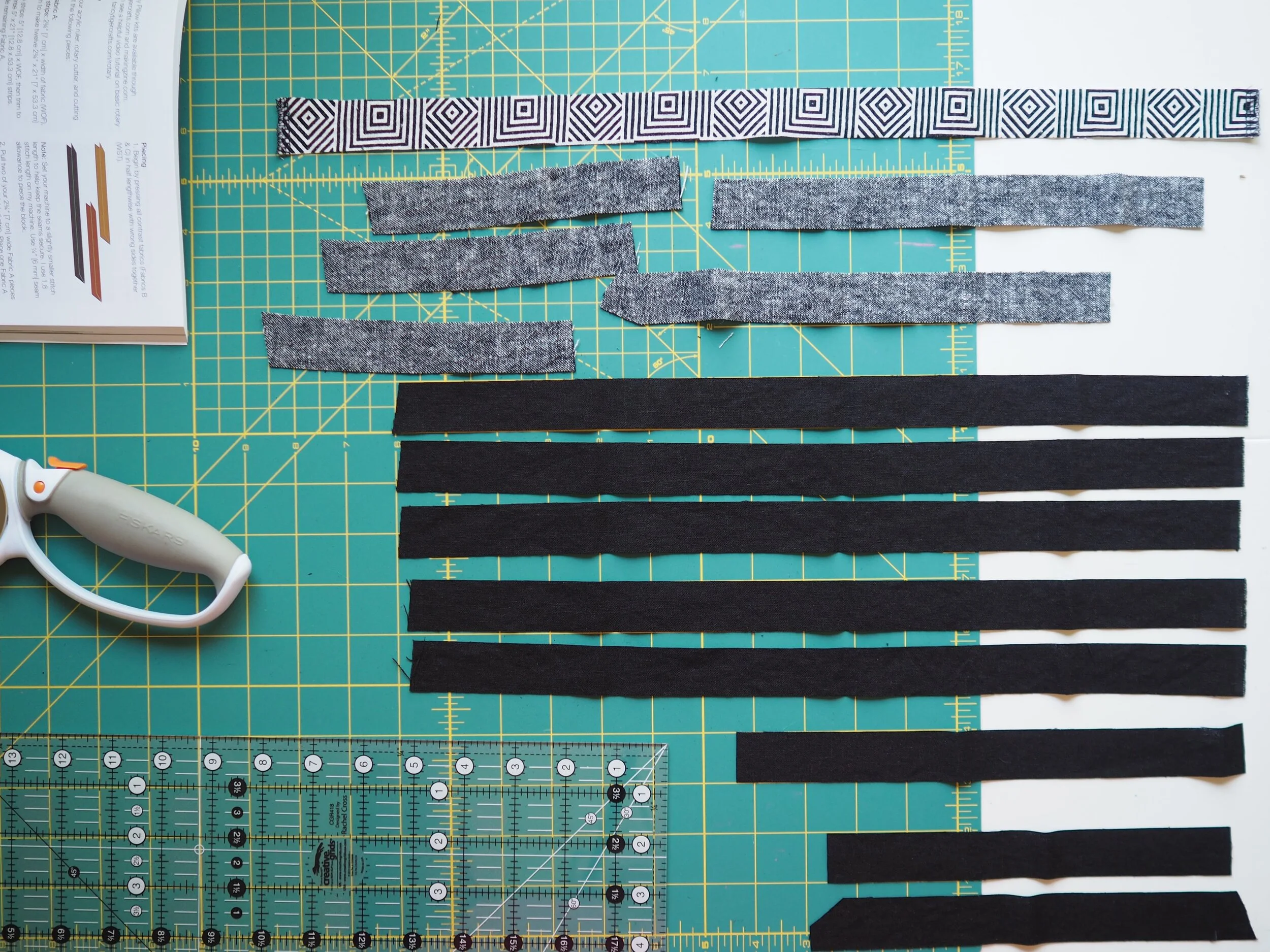I don’t have a witty summary of this spring. I managed to cobble a few brain cells together and started to learn quilting, an endeavor that’s been surprisingly satisfying at a time when even simple tasks can seem like a lot. The bulk of the cutting and piecing was done over the Memorial Day weekend and I experimented with a short stop motion video of the final construction steps.
Pattern: Pathway Pillow from Making Magazine No. 4: Lines. Made with Purl Soho Daily Linen in natural flax (backing fabric), with scraps of black linen/viscose blend (left over from Zadie jumpsuit), black yarn dyed Kaufman Brussels Washer linen, and a black & white printed cotton remnant from Discount Fabrics in SF.
New skills: Quilt piecing, using a walking foot, stop motion video
Lessons: When pressing seams to one side, press from above rather than below to have more control and achieve straighter lines.
Even when in stop motion mode, my camera adjusts settings after every photo - I should probably try shooting in full manual mode so that I don’t get the weird flashing effect from different light levels.
Cramming a 28 x 28 inch pillow form into a 24 x 24 inch pillow case is a bad idea.
Each (finished) strip is 4 inches wide, so it’s easy to increase / decrease the block size in 4-inch increments by increasing/decreasing the number of strips used, and lengthening them the same number of increments.
Aesthetically pleasing chaos is difficult to intentionally achieve.
What I’d do differently: I like the look of the fabrics I used but in the future, I’ll probably stick to a single thickness/weight for better consistency.
I’d like to experiment with spray starch to see if it makes the piecing process easier.
I followed the pattern instructions for the backing piece (formed by overlapping two pieces of linen) but it makes the pillow a little bit rectangular because there’s no fastener to prevent the back fabric from gaping slightly. I’m probably going to rip out the seam and sew in a zipper instead using the method in School of Sewing.
Care: Hand wash, lay flat to dry



